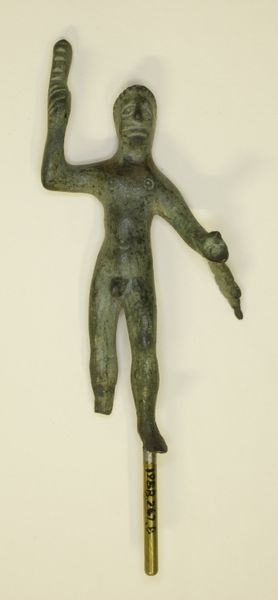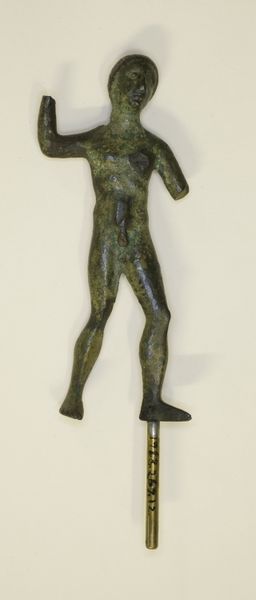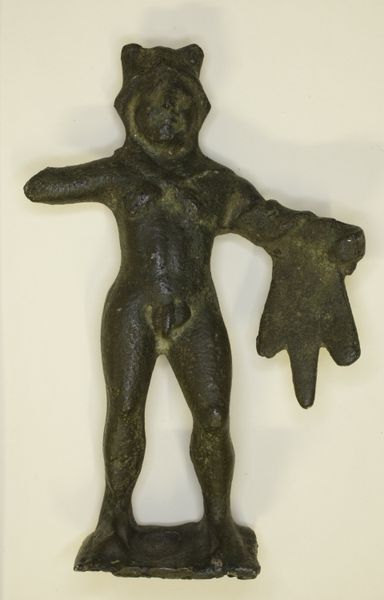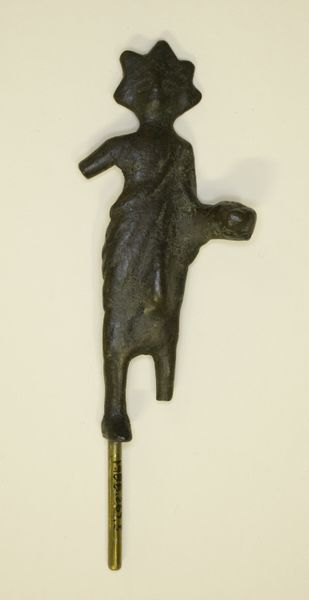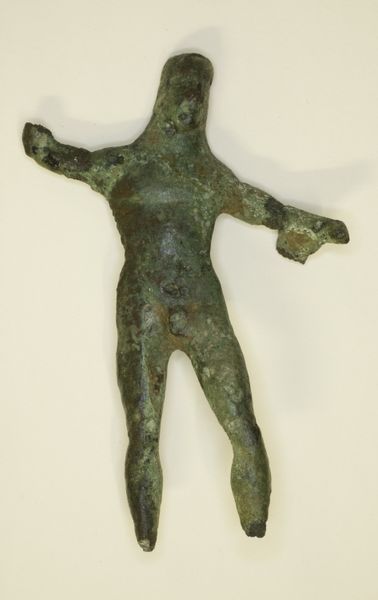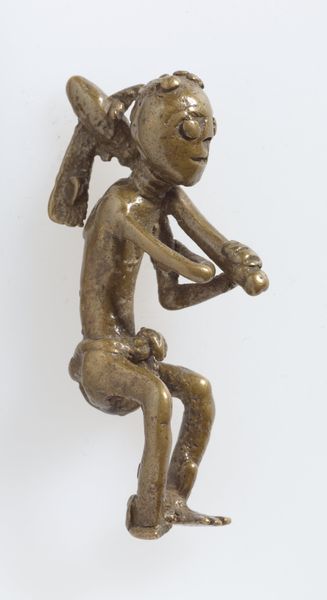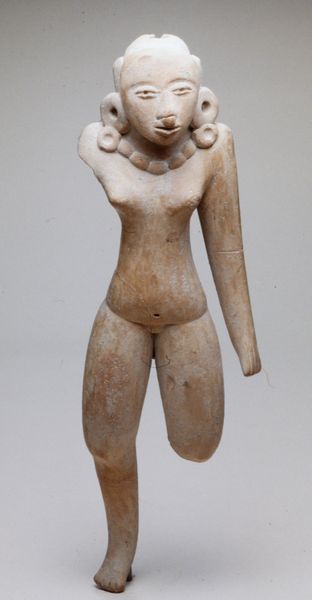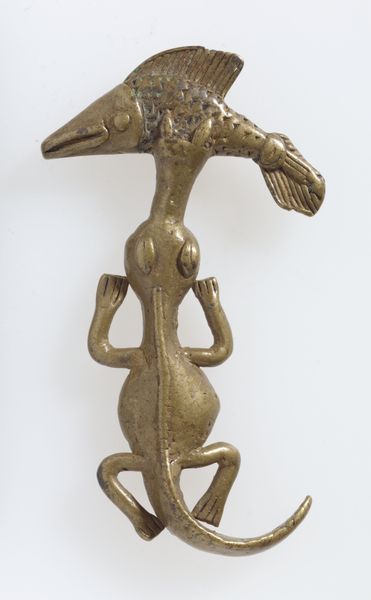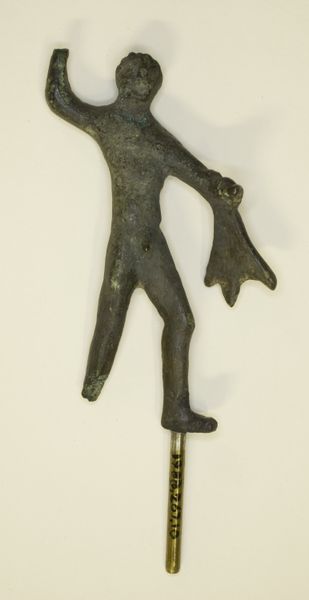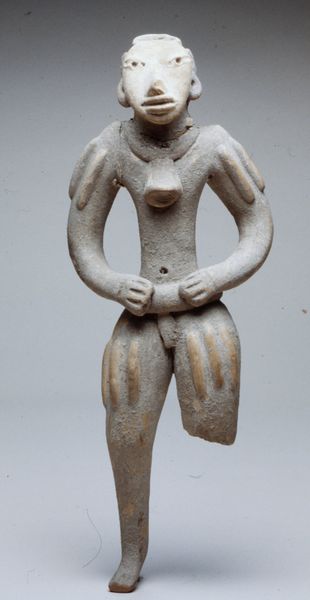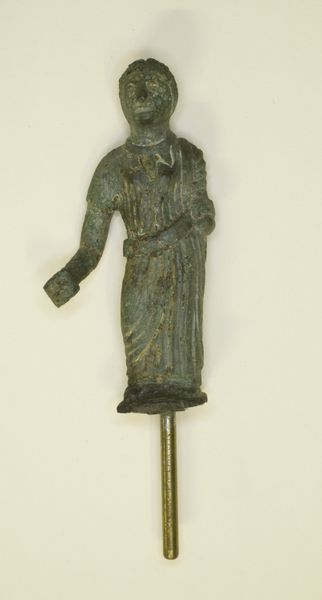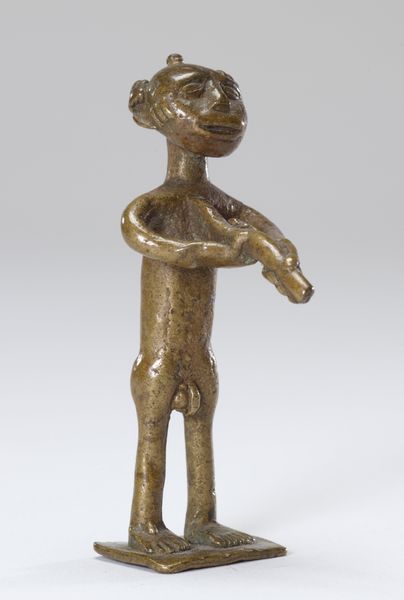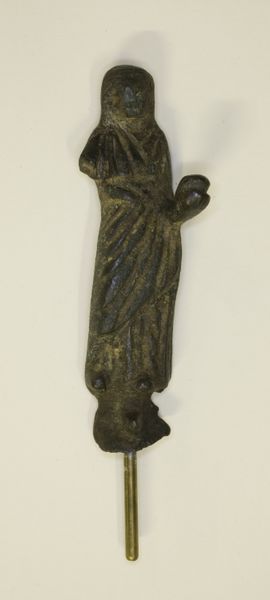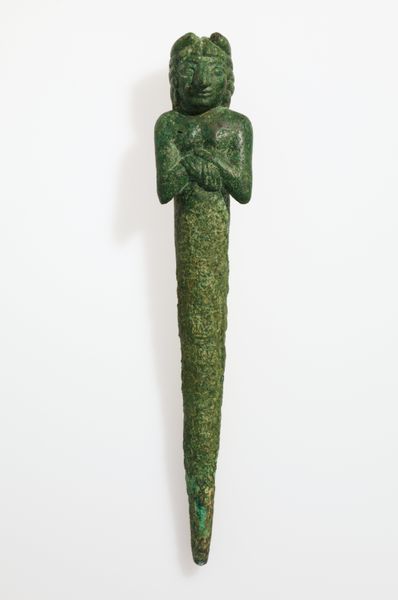
bronze, sculpture
#
statue
#
sculpture
#
greek-and-roman-art
#
bronze
#
figuration
#
ancient-mediterranean
#
sculpture
#
statue
Dimensions: 8.5 × 5 × 1 cm (3 3/8 × 2 × 3/8 in.)
Copyright: Public Domain
This bronze statuette of Herakles was made by an ancient Etruscan artist. Bronze, an alloy of copper and tin, was a common material for sculpture in the ancient world, prized for its durability and capacity to capture fine detail. The lost-wax casting technique was used to create this sculpture. First, the artist would have created a wax model, then encased in clay, and melted out to leave a mold into which molten bronze was poured. Once cooled, the mold was broken to reveal the finished sculpture, which might then be further refined with chasing and engraving. The choice of bronze and the mastery of casting technology speaks to the social context of the Etruscan civilization, their connection to trade networks, and their artistic expertise. Bronze, while not precious like gold or silver, was still valuable, and its use here indicates the patron's willingness to invest in a well-crafted religious offering. This statuette underscores how materials and making are key to understanding the cultural significance of art.
Comments
No comments
Be the first to comment and join the conversation on the ultimate creative platform.
